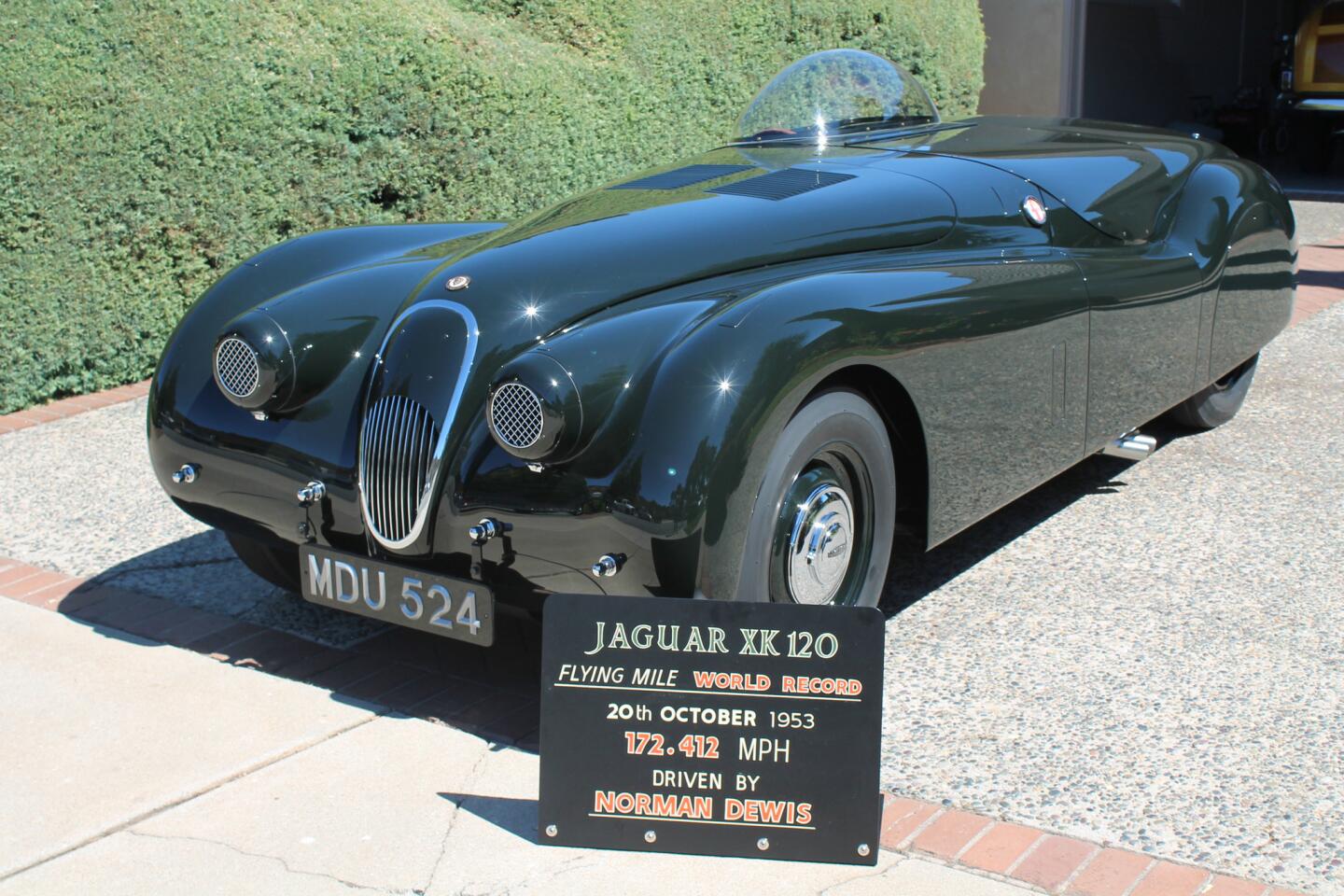Jaguar that set land speed record goes on sales block
- Share via
It wasn’t the world-record speed Norman Dewis was traveling at in 1953 that gave him pause, or that the Lucite canopy on the custom-built Jaguar XK 120 had no clearance for a helmet, or that his engine was spinning above the safe limit.
It was that his two timed 172-mph runs on a clear October day in Jabbeke, Belgium, attracted so many onlookers that they walked right up to the edge of the pavement along the two-lane stretch of highway to get a better look.
“I thought, hooo, this is dangerous,” recalled Dewis of his record-setting run.
Now a spry 93 years old, Dewis was on hand in Carmel with a restored version of the Jaguar he drove back in 1953. The car was shown at Friday’s Quail Motorsports Gathering, where it won Best in Class for the Post War category.
It is now being offered for sale privately.
Built in 1953 to set the world record for fastest vehicle over a full mile of driving, the car was a heavily modified XK 120.
Flat panels were bolted to the underside of the car and over the passenger seat to reduce drag, and the canopy was pulled off a glider plane and bolted to the car. The life-long Jaguar test driver also had to remove the car’s seat to fit inside the cockpit, and instead drove the car while sitting on pads.
To set the world record, Dewis and his team had to run the car on a five-mile stretch of road in Belgium. Two miles were used to get the car up to speed, one full mile was needed for the car’s actual timed run, and another two miles were used to slow the car.
As is the case with record-setting runs today, Dewis and the Jaguar team had to make a pass in both directions. The two times were then averaged.
Though Dewis’ official speed was 172.412 mph, such a high speed wasn’t the team’s goal that October. Just several weeks earlier, a Spanish Pegaso had set a record of 155 mph. Beating that time was the only goal for Dewis and Jaguar.
Curiously, Dewis’ car didn’t have a speedometer and he had no idea how fast he was going during both passes.
His only goal was not to blow the engine, which his mechanic had told him would likely happen if he ran the car above 5,800 RPM. Yet during the run, Dewis said the car was at top speed closer to 6,300 RPM. Nevertheless, he kept pushing.
It wasn’t until he pulled over at the end of both passes that he was told just how much faster his speed had been, Dewis recalled.
Pulling back the clean canopy and popping out of the stifling hot cockpit, Dewis was greeted by his ecstatic crew chief.
“Norman, you bugger, you know what you’ve done?” he said as he bear-hugged Dewis.
After this pass, the Jabbeke course was shut down for timed world record runs, citing safety concerns. The car was returned to its original specifications, and sold to a private owner.
Over the years, it changed hands several times before ending up with its current owners. They then had the car’s body completely recreated, though the chassis remains original.
The work took about 18 months and over 6,000 hours, according to Los Angeles-based co-owner Jeff Lotman. He’s entertaining any offer above $3 million for the car.
For Dewis, the Monterey Classic Car Week was a reunion for him and the restored XK 120, as it’s the first time he’s seen the car in decades.
“I can’t believe it’s so representative of the original,” Dewis said, shaking his head as he looked at the car. “It is perfect.”
And much easier to stare at when it’s not moving.
ALSO:
Photos: Highlights from Pebble Beach car week
In Monterey, car collectors race rare, vintage vehicles
Photos: Million-dollar highlights from Gooding’s upcoming auction







